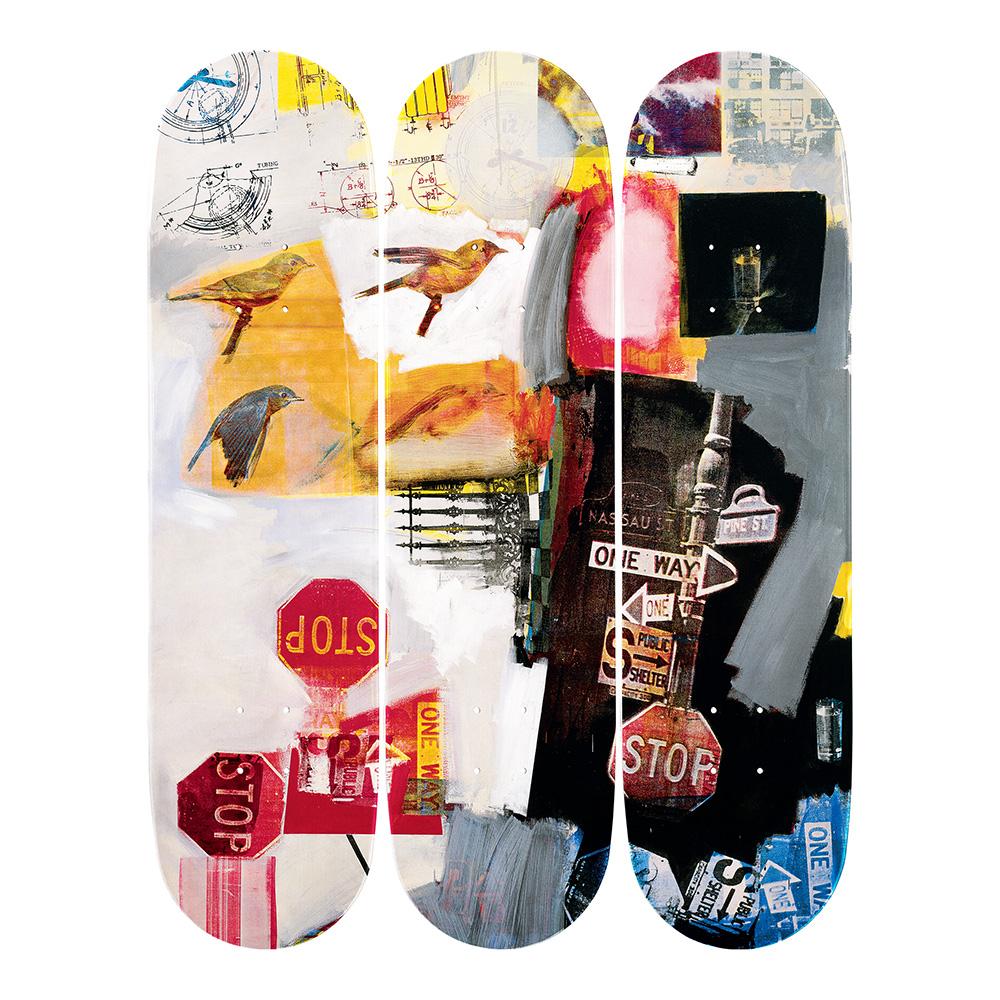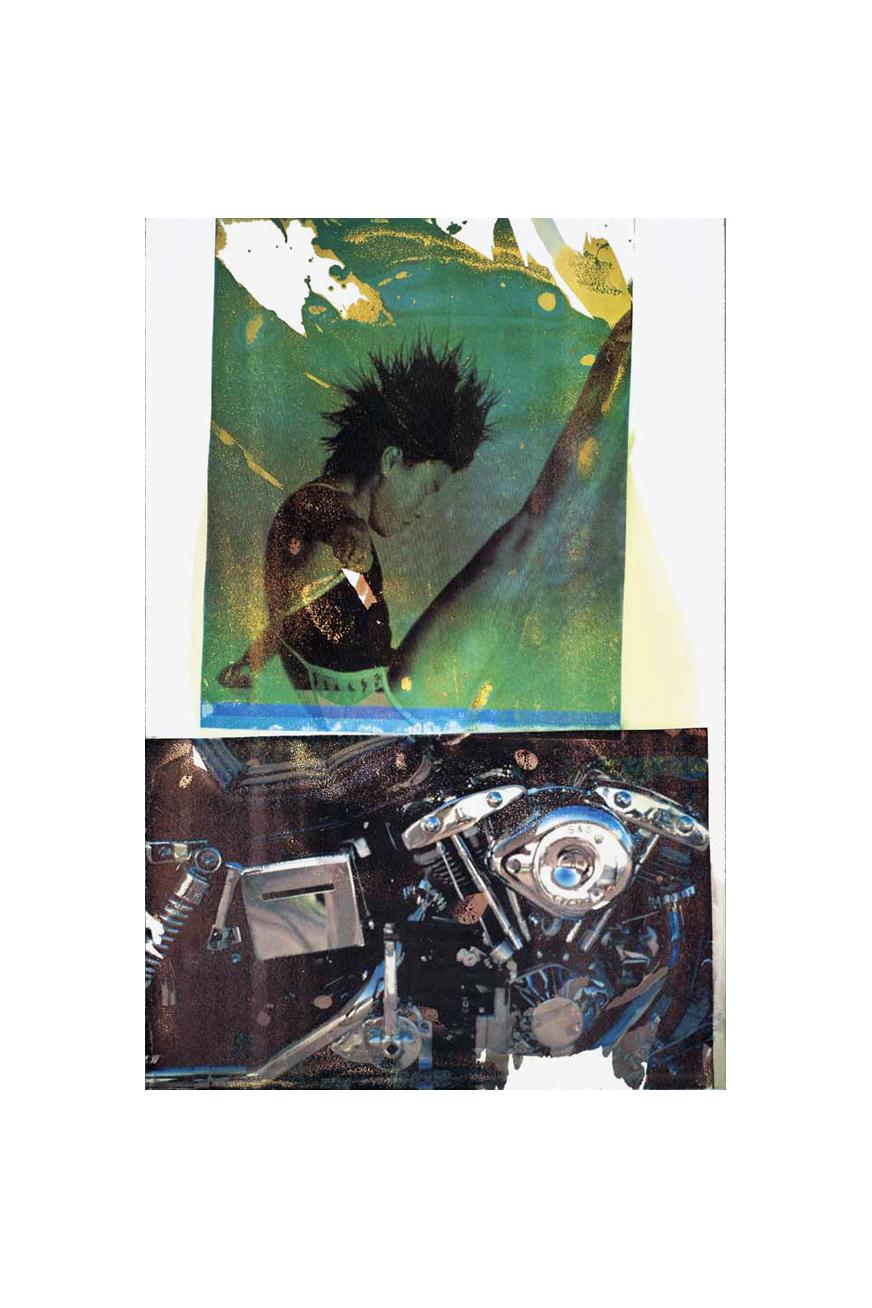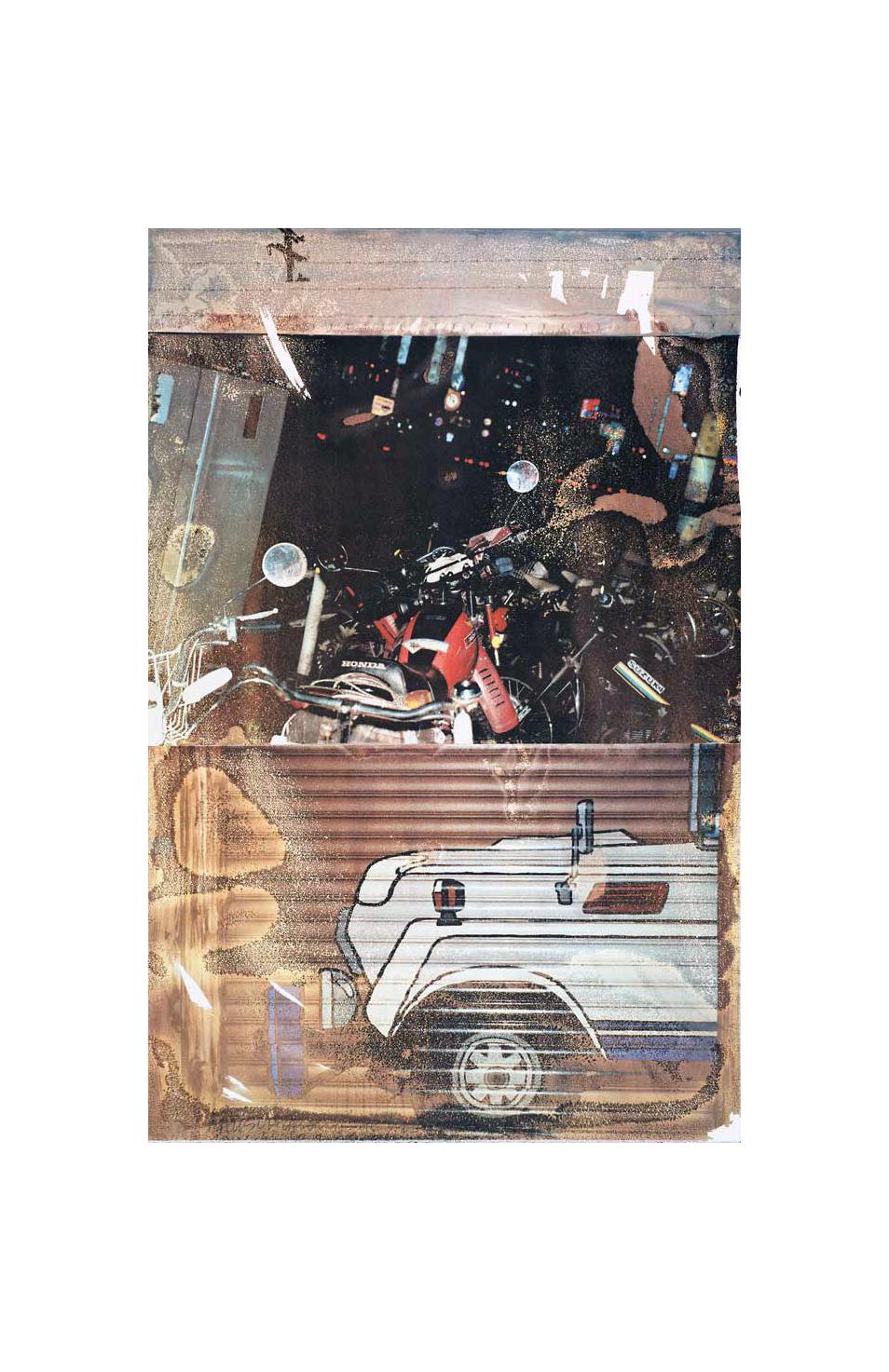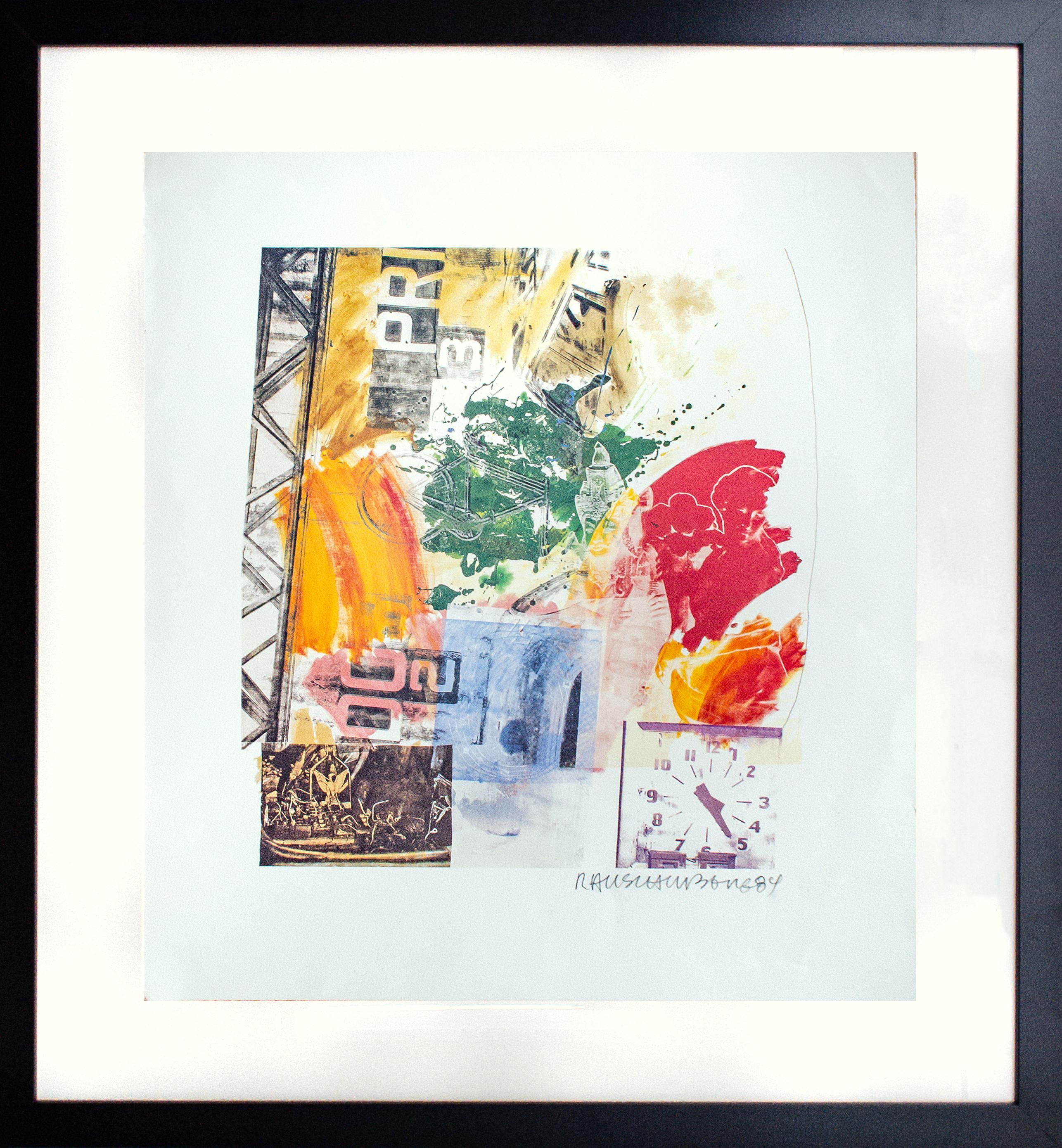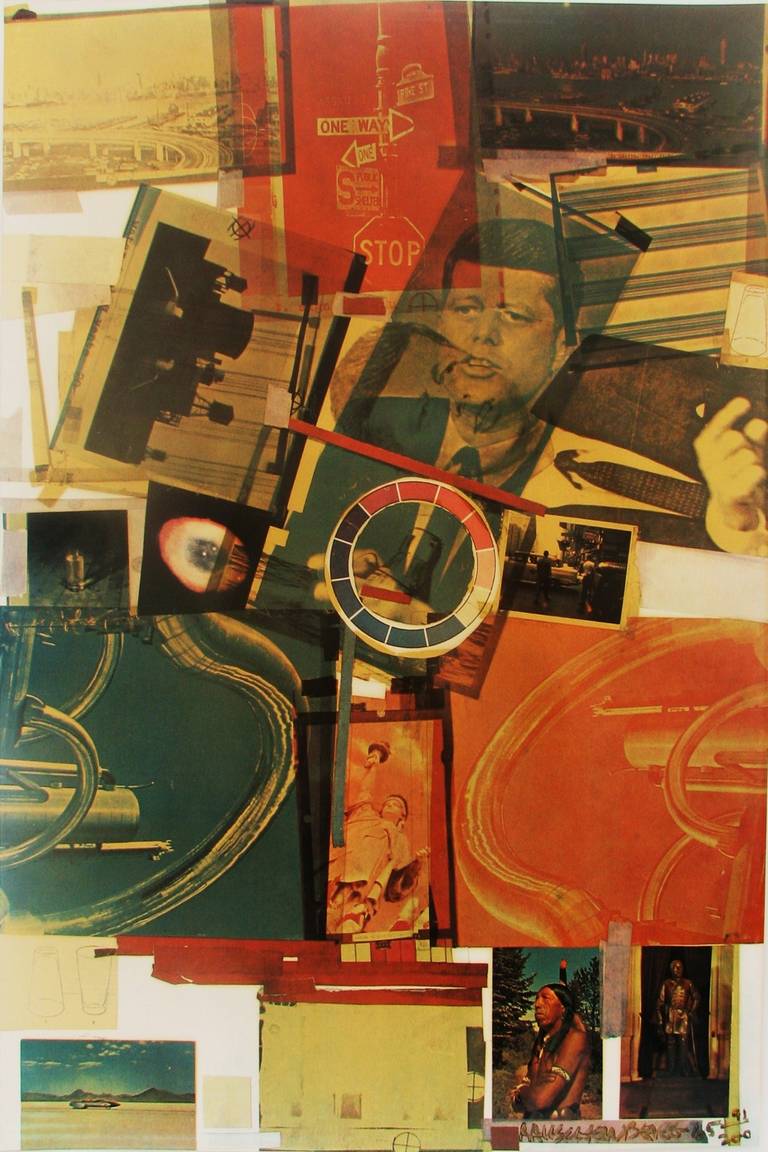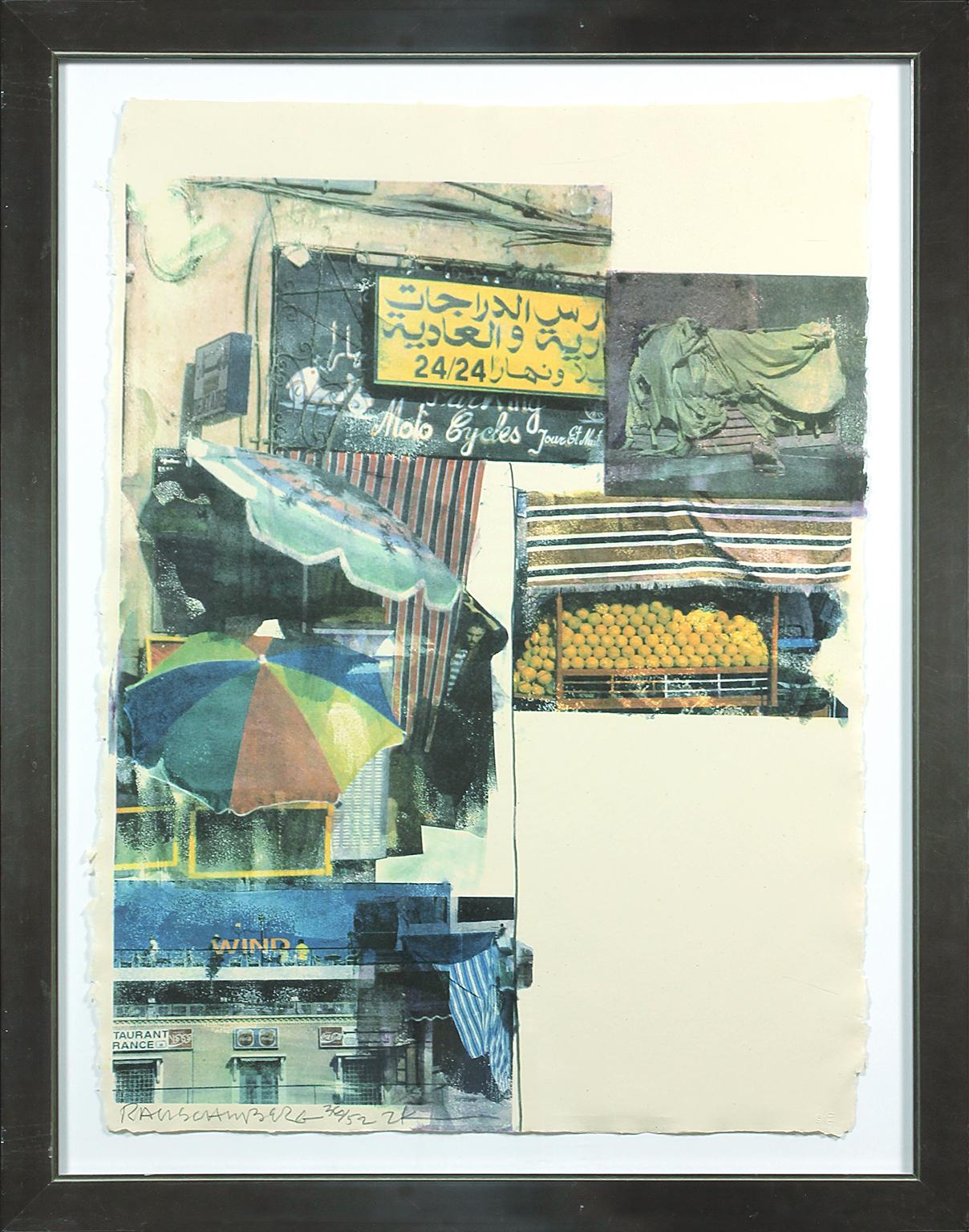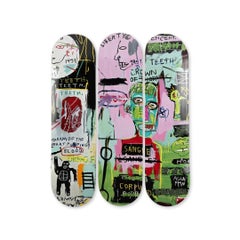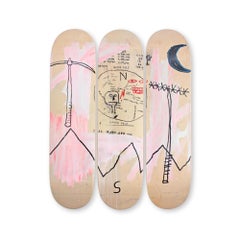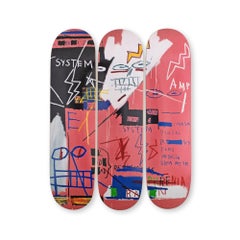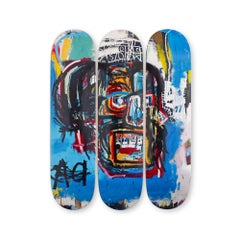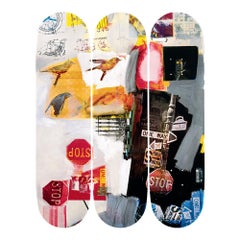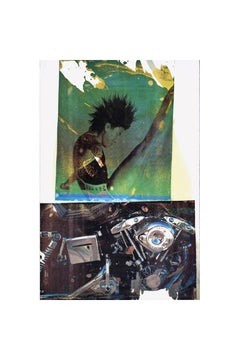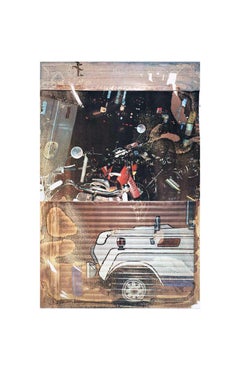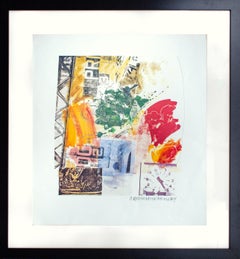Items Similar to Robert Rauschenberg - OVERDRIVE. Limited Skate Deck Modern Design Pop American
Want more images or videos?
Request additional images or videos from the seller
1 of 3
Robert Rauschenberg - OVERDRIVE. Limited Skate Deck Modern Design Pop American2017
2017
$1,124.15
£847.95
€950
CA$1,577.37
A$1,720.10
CHF 903.61
MX$20,616.42
NOK 11,458.70
SEK 10,663.40
DKK 7,237.36
About the Item
Robert Rauschenberg - OVERDRIVE
Date of creation: 2017
Medium: Digital print on Canadian maple wood
Edition: 300
Size: 80 x 20 cm (each skate)
Condition: In mint conditions and never displayed
This triptych is formed by three skate decks made of 7 ply grade A Canadian maple wood and belongs to a limited to an edition of 300.
ABOUT THE ARTIST
Robert Rauschenberg was an American artist who is widely recognized as one of the most important figures in the development of contemporary art in the 20th century. Born on October 22, 1925 in Port Arthur, Texas, Rauschenberg's early years were spent in a working-class family with limited means. Despite this, he showed an early talent for art and was encouraged by his mother to pursue his passion.
After serving in the U.S. Navy during World War II, Rauschenberg attended the Kansas City Art Institute and the Académie Julian in Paris, where he was exposed to the work of the European avant-garde. He later studied at Black Mountain College in North Carolina, where he came into contact with artists such as John Cage, Merce Cunningham, and Willem de Kooning, all of whom had a profound influence on his artistic development.
In the 1950s, Rauschenberg emerged as a leading figure in the emerging movement of Abstract Expressionism, which sought to break away from the traditional conventions of representational art. His "Combines" series, which he began in 1954, marked a departure from pure abstraction and combined elements of painting, sculpture, and found objects. This approach challenged the boundaries of what art could be and paved the way for the development of Pop Art and other avant-garde movements that followed.
Throughout his career, Rauschenberg continued to push the boundaries of traditional art forms, incorporating new media and techniques into his work. He was known for his use of non-traditional materials, such as newspaper clippings, photographs, and other found objects, as well as his experiments with silkscreen printing and digital imaging.
In addition to his innovative approach to art, Rauschenberg was also a prominent activist and philanthropist. He was a vocal advocate for human rights and social justice, and his work often addressed issues such as racism, poverty, and environmentalism. He also established the Rauschenberg Foundation, which provides grants and support to artists and organizations working in a wide range of fields.
Rauschenberg's work has been exhibited in museums and galleries around the world, and he received numerous awards and honors throughout his career, including the National Medal of Arts in 1993. He died on May 12, 2008, at the age of 82, leaving behind a legacy of artistic innovation and social engagement that continues to inspire and influence artists today.
- Creation Year:2017
- Dimensions:Height: 31.5 in (80 cm)Width: 7.88 in (20 cm)
- Medium:
- Movement & Style:
- After:Robert Rauschenberg (1925 - 2008, American)
- Period:
- Condition:
- Gallery Location:Madrid, ES
- Reference Number:1stDibs: LU1033117131092
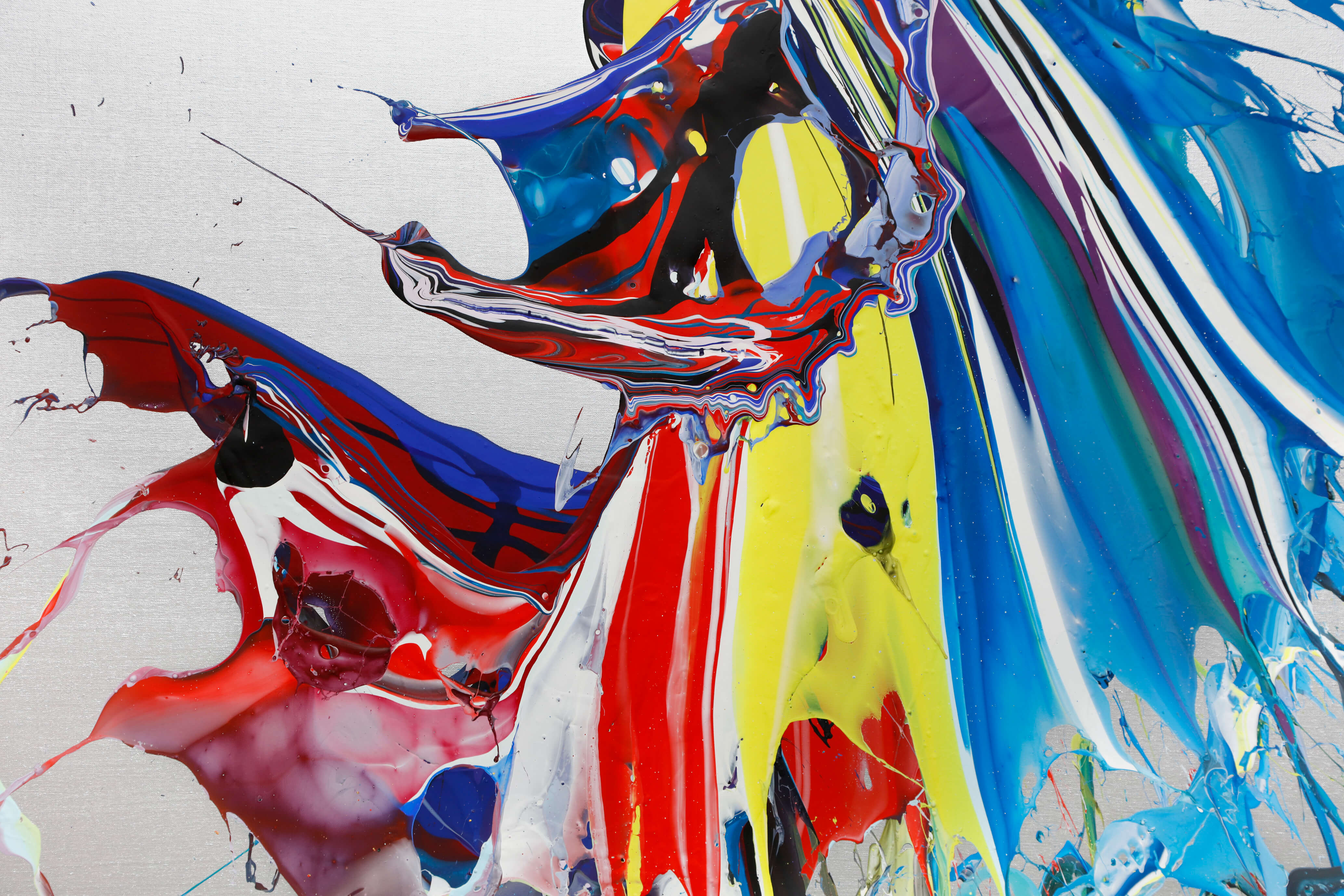
About the Seller
5.0
Vetted Professional Seller
Every seller passes strict standards for authenticity and reliability
Established in 2011
1stDibs seller since 2018
183 sales on 1stDibs
Typical response time: 6 hours
- ShippingRetrieving quote...Shipping from: Madrid, Spain
- Return Policy
More From This Seller
View AllJEAN-MICHEL BASQUIAT - In Italian. Skate Decks Pop Urban Art Design
By Jean-Michel Basquiat
Located in Madrid, Madrid
Jean-Michel Basquiat - In Italian
Date of creation: 2024
Medium: Digital print on Canadian maple wood
Edition: Open
Size: 80 x 20 cm (each skate)
Condition: In mint conditions and n...
Category
2010s Pop Art More Art
Materials
Wood, Digital
JEAN-MICHEL BASQUIAT - Both Poles. Skate Decks Pop Urban Art Design
By Jean-Michel Basquiat
Located in Madrid, Madrid
Jean-Michel Basquiat - Both Poles
Date of creation: 2024
Medium: Digital print on Canadian maple wood
Edition: Open
Size: 80 x 20 cm (each skate)
Condition: In mint conditions and never displayed
This triptych is formed by three skate decks made of 7 ply grade A Canadian maple wood.
© Estate of Jean-Michel Basquiat. Licensed by Artestar, New York
This skateboard set reproduces Both Poles (1982), an iconic work by Jean-Michel Basquiat that encapsulates the tensions running through his visual language: past and present, earth and sky, history and immediacy. The original piece, executed in acrylic, oil stick, and collage, presents a fragmented scene dominated by a symbolic mountain, a crescent moon, and charged elements such as a sickle and a post.
Here, Basquiat confronts “both poles” of his inner and outer worlds: excavation and invocation, memory and transmission. This edition brings that conceptual force into the urban language of skateboarding, becoming both a collectible object and a contemporary artistic statement.
Transposed onto the skateboard format, the work becomes a visual declaration that bridges art and street culture, while preserving the expressive and conceptual intensity of the original.
ABOUT THE ARTIST
Jean-Michel Basquiat (1960-1988) was one of the most influential artists of the 20th century, famous for his ability to fuse urban culture, social criticism and art history into a unique style. Born in Brooklyn, New York, to a Haitian father and Puerto Rican mother, his life and work were shaped by his multicultural heritage, the New York art scene and the social tensions of his time. Although his career was brief, his impact on contemporary art has been lasting and significant.
Basquiat showed an interest in art from an early age. His mother, Matilde Andrades, took him to museums and encouraged him to draw. At the age of seven, a car accident left him hospitalized for a time, and it was then that his mother gave him a copy of the anatomy book Gray's Anatomy, which influenced his fascination with the human body and its visual representation.
Despite his early talent, Basquiat's family life was turbulent. His mother was hospitalized for psychiatric problems and his relationship with his father, Gerard Basquiat, was troubled. This instability contributed to Basquiat dropping out of school at age 17 to pursue his artistic career on the streets of New York.
As a teenager, Basquiat joined the New York graffiti scene under the pseudonym SAMO (an acronym for "Same Old Shit"), which he used to sign his cryptic and poetic messages on the streets of Manhattan with his friend Al Diaz. SAMO's graffiti were a mixture of philosophical and social commentary on popular culture, capitalism and religion, and soon attracted the attention of the underground art scene.
In 1980, SAMO "died" when Basquiat and Diaz decided to end their collaboration, marking the beginning of Basquiat's transition from street graffiti to art galleries.
Basquiat emerged as a talent to watch in 1980, when he participated in the group exhibition The Times Square Show, which included other emerging artists from New York's Lower East Side scene. That same year, he attracted the attention of critics and collectors who saw in his work an electrifying blend of street art and neo-expressionism, the predominant movement of the time.
In 1981, art critic René Ricard published the influential essay The Radiant Child in Artforum magazine, which positioned Basquiat as one of the most promising artists of his generation. Shortly thereafter, he met renowned artist Andy Warhol, with whom he formed a close friendship and significant artistic collaboration. This association was instrumental in catapulting his career into the world of high art.
The collaboration with Warhol was a pivotal point in Basquiat's career. The two artists, although coming from very different worlds, shared a fascination with fame and popular culture. Together, they produced a series of works that combined Warhol's pop art icons with Basquiat's raw, spontaneous style.
However, this collaboration was also a source of controversy. Many critics accused Warhol of "exploiting" Basquiat, while others saw the collaboration as a creative dialogue between two genius minds. Although the criticism was mixed, there is no doubt that the relationship between the two artists helped cement Basquiat's reputation in the art world.
Basquiat's style is a unique amalgam of influences. His work is characterized by the use of dismembered human figures, skeletons and internal organs, evoking the fragility of the body and mortality. Basquiat also used symbols that alluded to African-American and African history, such as crowns, masks and references to historical figures such as Toussaint Louverture.
The use of text is another crucial aspect of his work. Words, phrases and numbers appeared in his paintings, often crossed out or overlapped, creating a sense of controlled chaos. These fragmented words provoked a non-linear reading of his works and conveyed multiple layers of meaning.
His art also reflected his concerns about racial issues, especially the place of people of African descent in Western art history and in society at large. The crowns that Basquiat often drew on his figures were a symbol of power and resistance, a way of proclaiming himself "king" in a world that had historically excluded black artists from the upper echelons of art.
In works such as The Death of Michael...
Category
2010s Pop Art More Art
Materials
Wood, Digital
JEAN-MICHEL BASQUIAT - Six Fifty. Skate Decks Pop Urban Art Design
By Jean-Michel Basquiat
Located in Madrid, Madrid
Jean-Michel Basquiat - Six Fifty
Date of creation: 2024
Medium: Digital print on Canadian maple wood
Edition: Open
Size: 80 x 20 cm (each skate)
Condition: In mint conditions and ne...
Category
2010s Pop Art More Art
Materials
Wood, Digital
JEAN-MICHEL BASQUIAT - Untitled Head (Skull) Skate Decks Urban Art Design
By Jean-Michel Basquiat
Located in Madrid, Madrid
Jean-Michel Basquiat - Untitled Head (Skull 2), 1982
Date of creation: 2024
Medium: Digital print on Canadian maple wood
Edition: Open
Size: 80 x 20 cm (each skate)
Condition: In mi...
Category
2010s Pop Art More Art
Materials
Wood, Digital
JEAN-MICHEL BASQUIAT - Charles The First. Skate Decks Pop Urban Art Design
By Jean-Michel Basquiat
Located in Madrid, Madrid
Jean-Michel Basquiat - Charles The First
Date of creation: 2024
Medium: Digital print on Canadian maple wood
Edition: Open
Size: 80 x 20 cm (each skate)
Condition: In mint condition...
Category
2010s Pop Art More Art
Materials
Wood, Digital
James Rosenquist F-111 TRIPTYCH (ATOM) Limited Skate Modern Design Pop American
By James Rosenquist
Located in Madrid, Madrid
James Rosenquist - F-111 TRIPTYCH A (ATOM)
Date of creation: 2021
Medium: Digital print on Canadian maple wood
Edition: 100
Size: 80 x 20 cm (each skate)
Condition: In mint condition...
Category
2010s Pop Art Abstract Prints
Materials
Wood, Maple, Screen
You May Also Like
Overdrive
By Robert Rauschenberg
Located in New York, NY
Robert Rauschenberg, Overdrive, 2017
Screenprints in color on three individual maple wood skate decks
With artist's printed signature
31 x 8 in. (78.7 x 20.3 cm), each, unframed
Edit...
Category
21st Century and Contemporary More Art
Materials
Screen
Sports
By Robert Rauschenberg
Located in Calabasas, CA
Artist: Robert Rauschenberg
Title: Sports
Year: 1994
Medium: Lithograph with vegetable dye water transfer on Arches Infinity paper
Edition: 50; signed, dated and numbered in pencil
S...
Category
1990s Contemporary Abstract Prints
Materials
Lithograph
Technology
By Robert Rauschenberg
Located in Calabasas, CA
Artist: Robert Rauschenberg
Title: Technology
Year: 1994
Medium: Lithograph with vegetable dye water transfer on Arches Infinity paper
Edition: 50; signed, dated and numbered in penc...
Category
1990s Contemporary Abstract Prints
Materials
Lithograph
Robert Rauschenberg Signed Lithograph
By Robert Rauschenberg
Located in New York, NY
Robert Rauschenberg
American (1925-2008)
Untitled, for ROCI
offset color lithograph, signed and dated lower right "Rauschenberg 84"
25 3/4 x 22 3/4 in. (sheet)
Framed: 31 1/4 x 29 x...
Category
1980s Post-Modern Figurative Prints
Materials
Lithograph
Robert Rauschenberg 'Core'
By Robert Rauschenberg
Located in New York, NY
C.O.R.E.
1965
Lithograph
Signed and numbered edition of 200
36 X 24 inches
Robert Rauschenberg’s work reflects a methodology between the approaches of structuralism and post-...
Category
21st Century and Contemporary Pop Art Abstract Prints
Materials
Lithograph
Price Upon Request
Flaps 12-color screen print by Robert Rauschenberg Edition 36 of 52
By Robert Rauschenberg
Located in Boca Raton, FL
12-color screen print on deckle edge paper of a collage of Moroccan street scenes including an orange stand, umbrellas, a motorcycle shop and a F...
Category
Early 2000s Contemporary Landscape Prints
Materials
Screen
